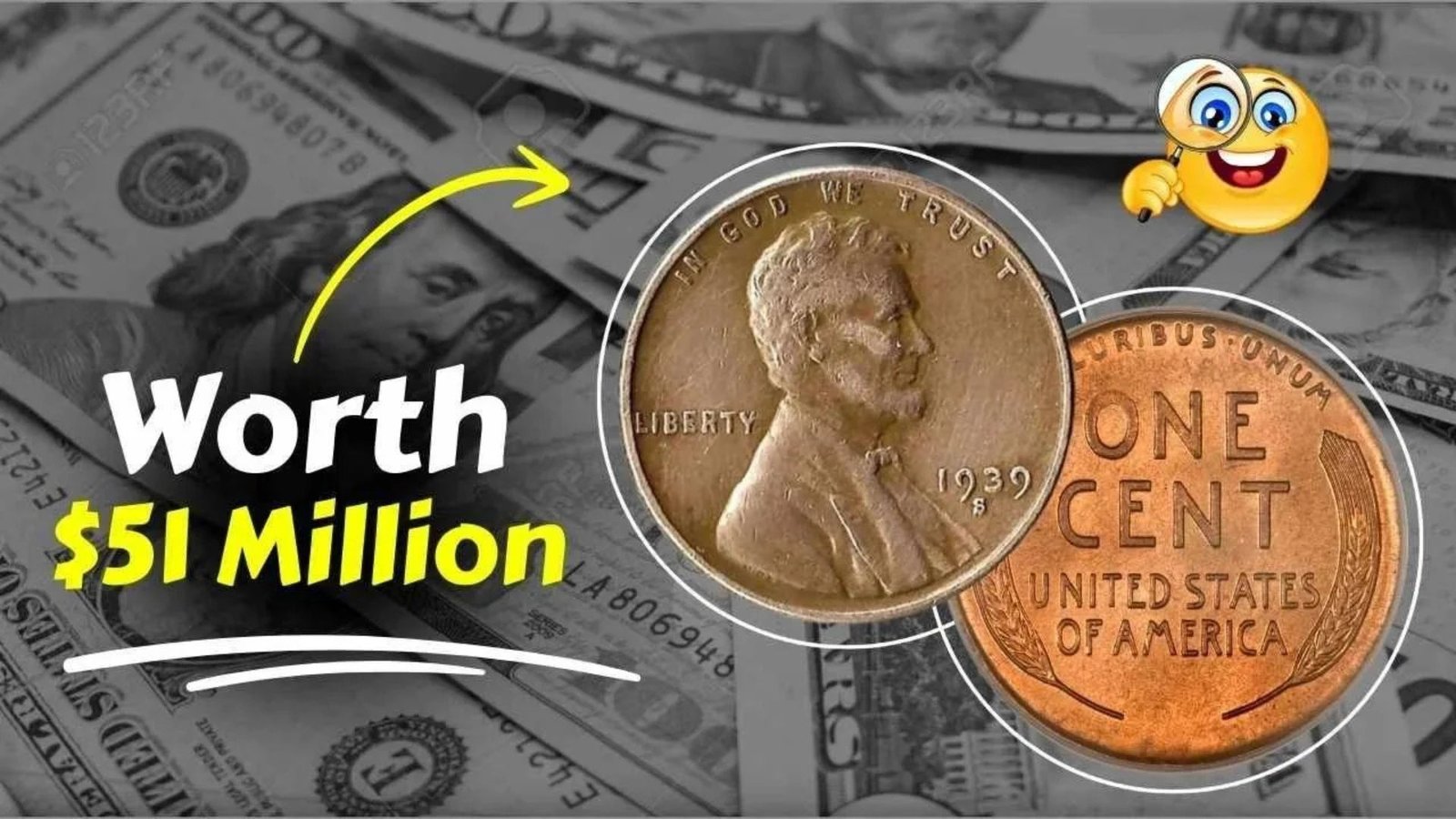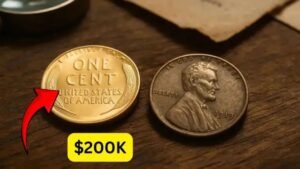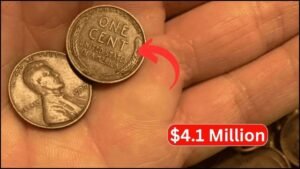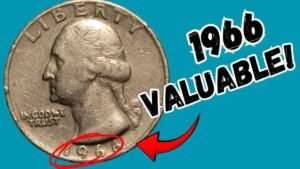Imagine finding a penny worth $51 million sitting in your change jar. Sounds impossible, right? Yet one rare Lincoln Wheat Penny has done exactly that—turning an ordinary-looking coin into a record-breaking treasure. Could your spare change hide one of these extraordinary finds? Let’s uncover the mystery.
What Is the Lincoln Wheat Penny?
The Lincoln Wheat Penny, first minted in 1909, is one of the most iconic coins in American history. It features Abraham Lincoln’s profile on the front and two wheat stalks on the reverse—hence the nickname “Wheat Cent.” Minted until 1958, it remains a favorite among collectors because of its design, history, and hidden rarities.
The Shocking $51 Million Sale
In a jaw-dropping turn of events, a 1943 Lincoln Wheat Penny reportedly sold for $51 million in a private auction. This penny wasn’t just any coin—it was struck in copper, not the usual steel used during World War II. Only a few of these copper versions exist, making them among the rarest coins in US history. The staggering sale stunned collectors worldwide and reignited interest in hunting down hidden treasures.
How Did It Become So Valuable?
The story begins during World War II, when copper was needed for ammunition. The US Mint switched to steel pennies in 1943—but a few copper blanks accidentally made their way into production. These 1943 copper Wheat Pennies became the stuff of legend. Their combination of error, rarity, and historical context skyrocketed their value over the decades.
Other Valuable Lincoln Wheat Pennies
While not all Wheat Pennies will make you a millionaire, several are still worth serious money. Below is a breakdown of some other highly sought-after Lincoln Wheat Pennies:
| Year | Mint Mark | Special Feature | Estimated Value |
|---|---|---|---|
| 1909-S VDB | San Francisco | Designer initials (VDB) | $1,000–$3,000 |
| 1914-D | Denver | Low mintage | $2,000–$5,000 |
| 1922 No D | Denver | Missing mint mark | $1,500–$6,000 |
| 1931-S | San Francisco | Low mintage | $100–$200 |
| 1943 Copper | Philadelphia | Wrong metal composition | $1 million+ |
| 1955 Doubled Die | Philadelphia | Doubling on inscriptions | $2,000–$15,000 |
Why Collectors Are Obsessed
Collectors love Wheat Pennies because they blend American history, mystery, and money. Each rare find tells a story—about minting mistakes, design evolution, and the era it represents. The thrill of discovering a rare coin in circulation fuels a never-ending hunt for these hidden treasures.
How to Check If You Have One
You don’t need to be an expert to spot a potentially valuable penny. Here’s a quick comparison guide to help:
| Check This Feature | What It Means | Potential Value |
|---|---|---|
| Year: 1909–1958 | All Wheat Pennies | $0.10–$100 |
| Mint Mark “S” or “D” | San Francisco or Denver mints | $50–$5,000 |
| 1943 Copper | Rare error coin | $1 million+ |
| 1955 Doubled Die | Distinct doubling visible | $2,000–$15,000 |
| Exceptional Condition | Mint or uncirculated | Value increases dramatically |
| Use a magnifying glass and good lighting. Look for unusual color (reddish copper tone), visible doubling, or missing mint marks. If you suspect you’ve found a rare one, get it authenticated by PCGS or NGC. |
Expert Tips to Maximize Your Coin’s Value
- Handle with care: Oils and scratches can reduce value.
- Avoid cleaning: Cleaning coins can damage their surface and decrease their worth.
- Grade your coin: A professional grade adds credibility and boosts resale price.
- Store safely: Use acid-free holders and avoid humid environments.
- Research market trends: Coin values fluctuate; stay updated on auction results.
Frequently Asked Questions (FAQs)
Q: Can I really find a valuable Wheat Penny in circulation today?
A: Yes, though rare, collectors occasionally find older pennies in circulation or family coin jars.
Q: How can I tell if my 1943 penny is copper or steel?
A: Use a magnet—steel pennies stick, copper ones don’t. If yours doesn’t stick, you might have a jackpot.
Q: Where can I sell a rare coin?
A: Reputable auction houses, certified dealers, or online marketplaces like Heritage Auctions or eBay (for graded coins).
Conclusion: Could a Million-Dollar Penny Be Hiding in Plain Sight?
The Lincoln Wheat Penny has proven that even the smallest coin can hold incredible value. That humble cent in your pocket could be worth a life-changing fortune. So before you toss your spare change into a jar, take a closer look—you might just uncover the next $51 million treasure.




